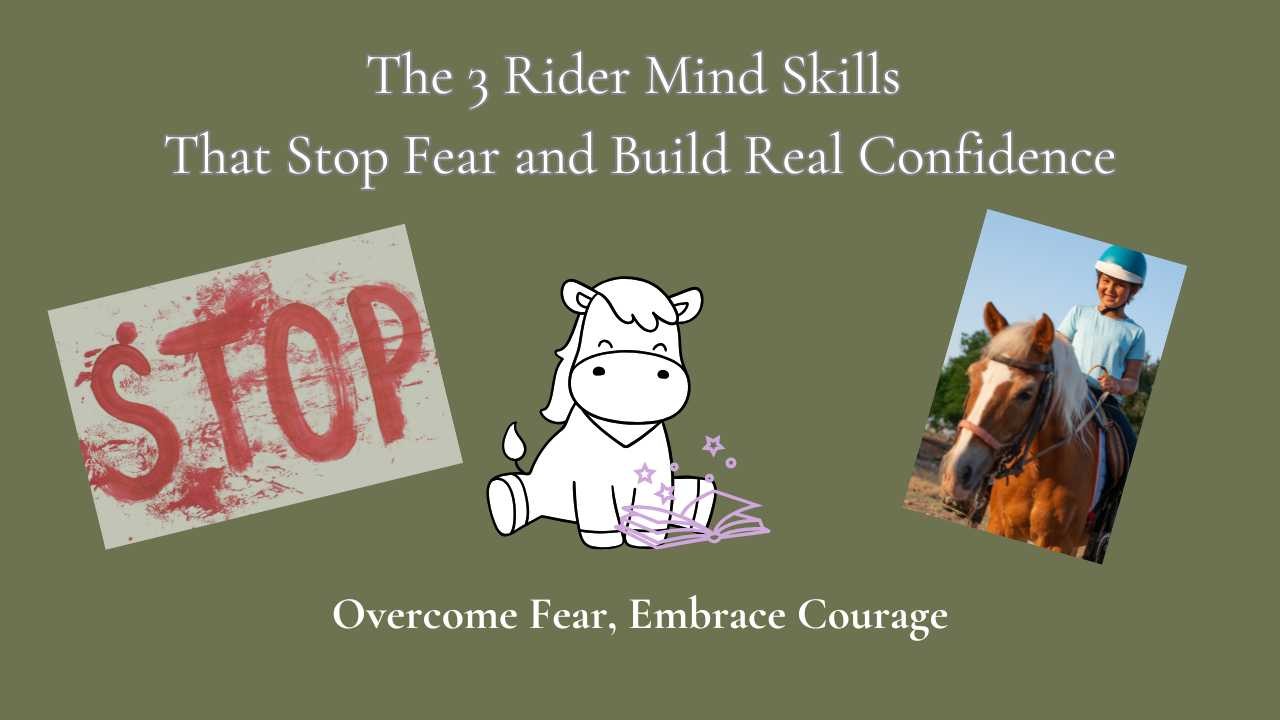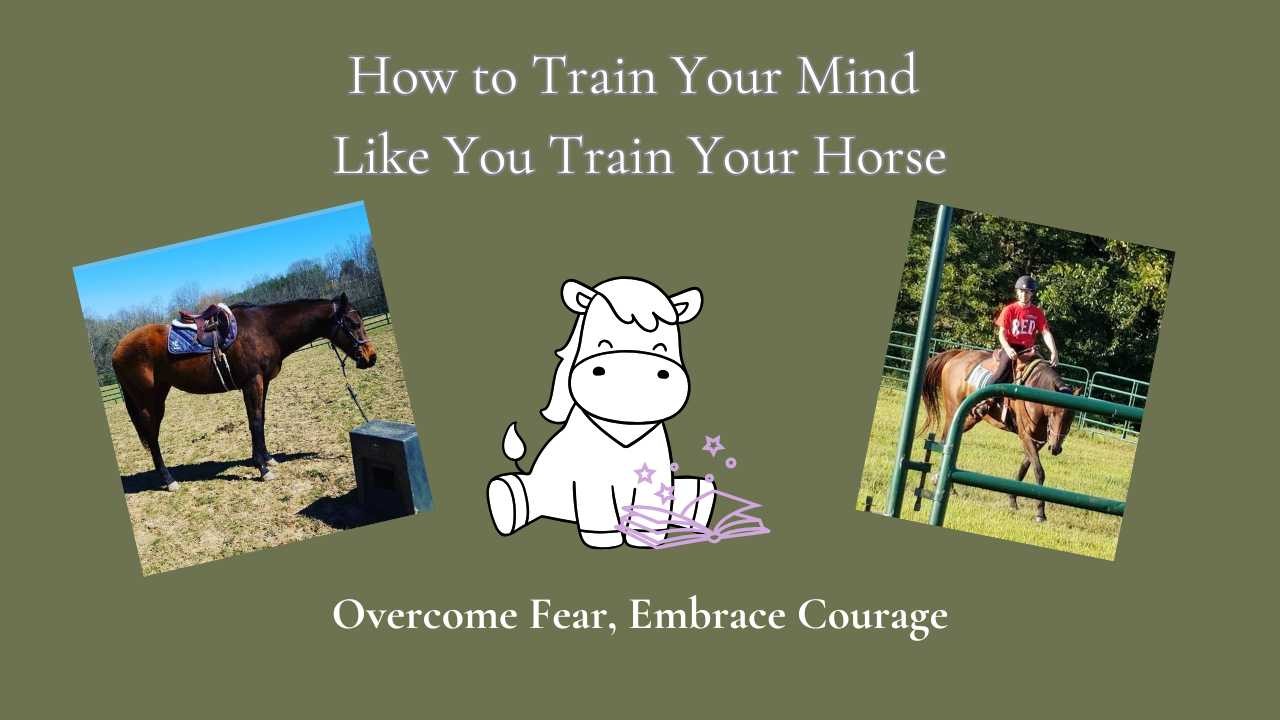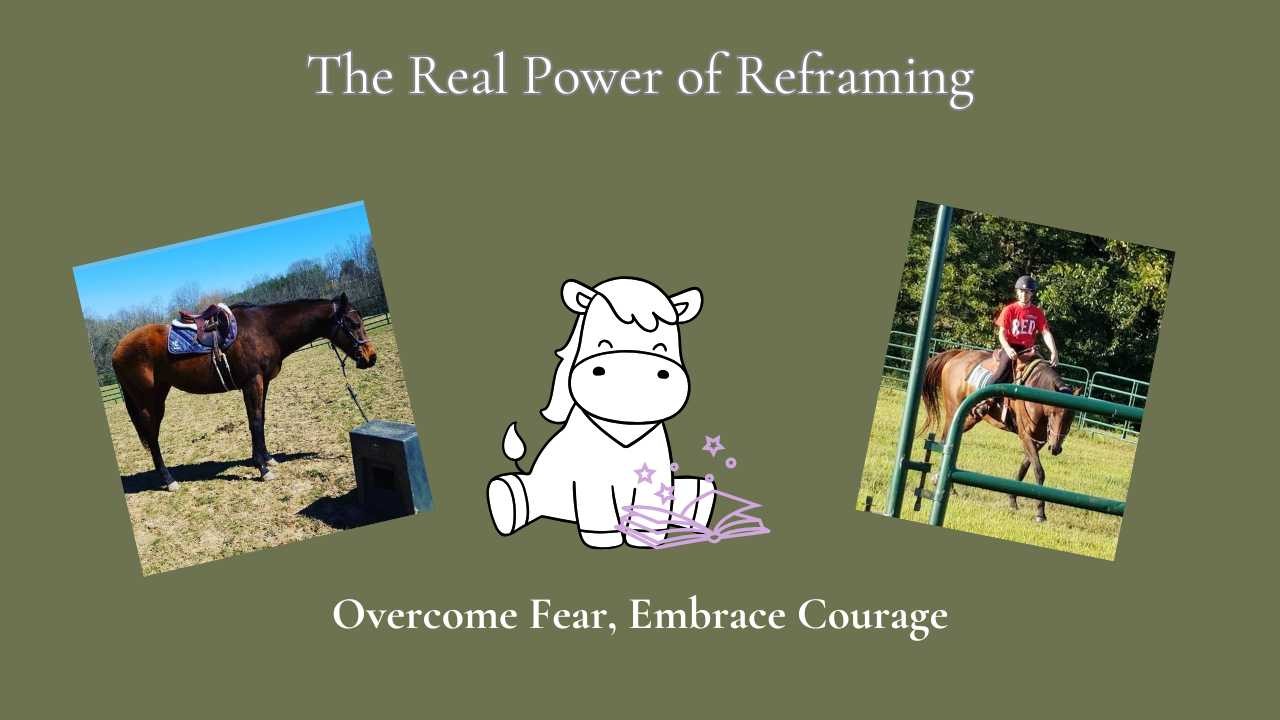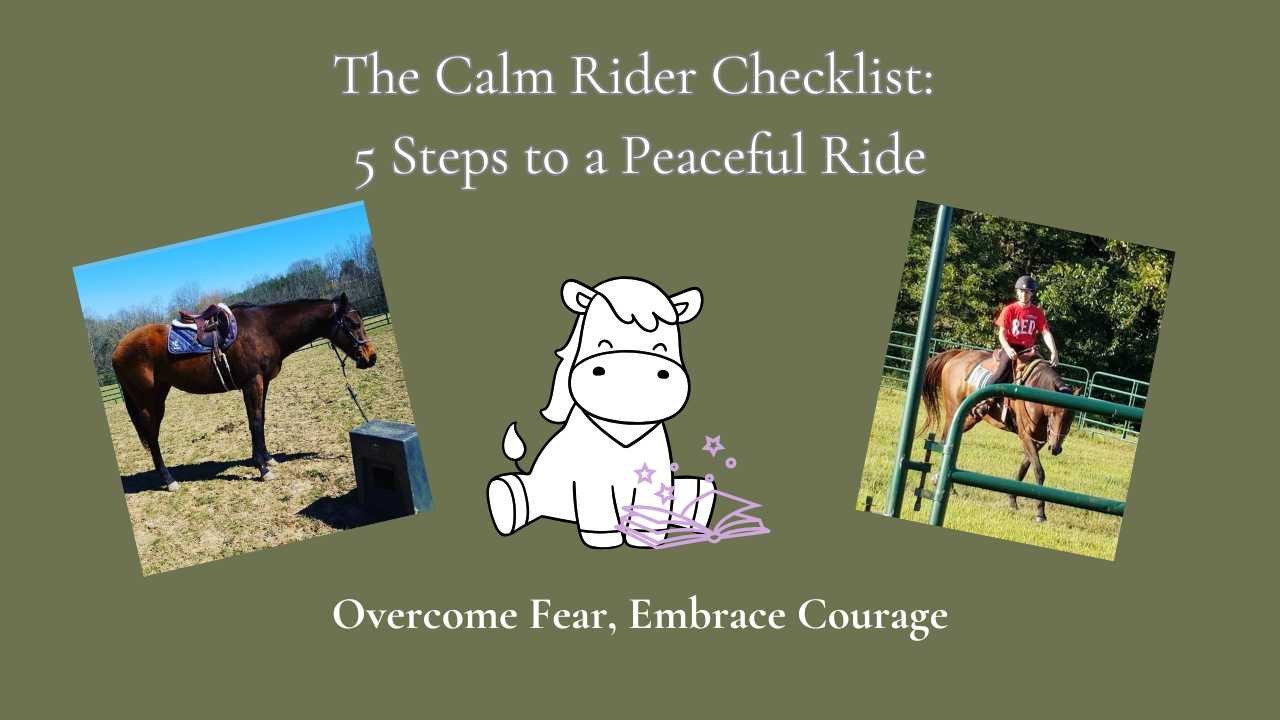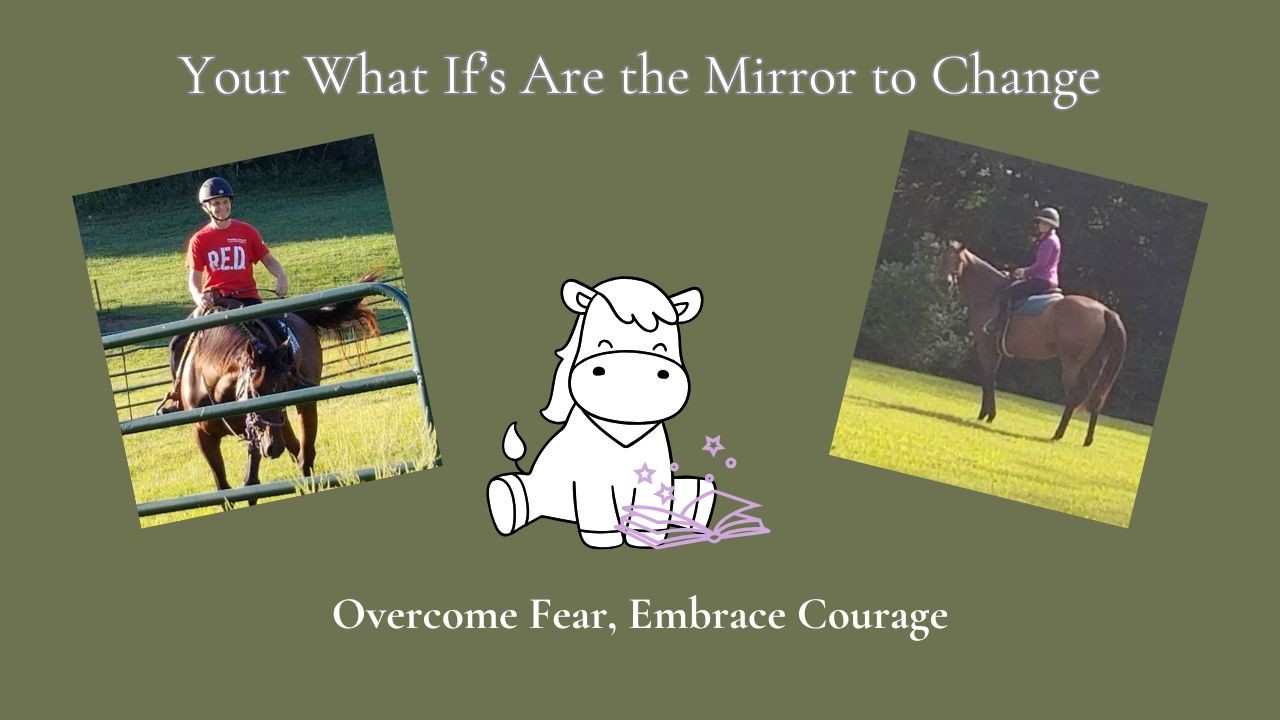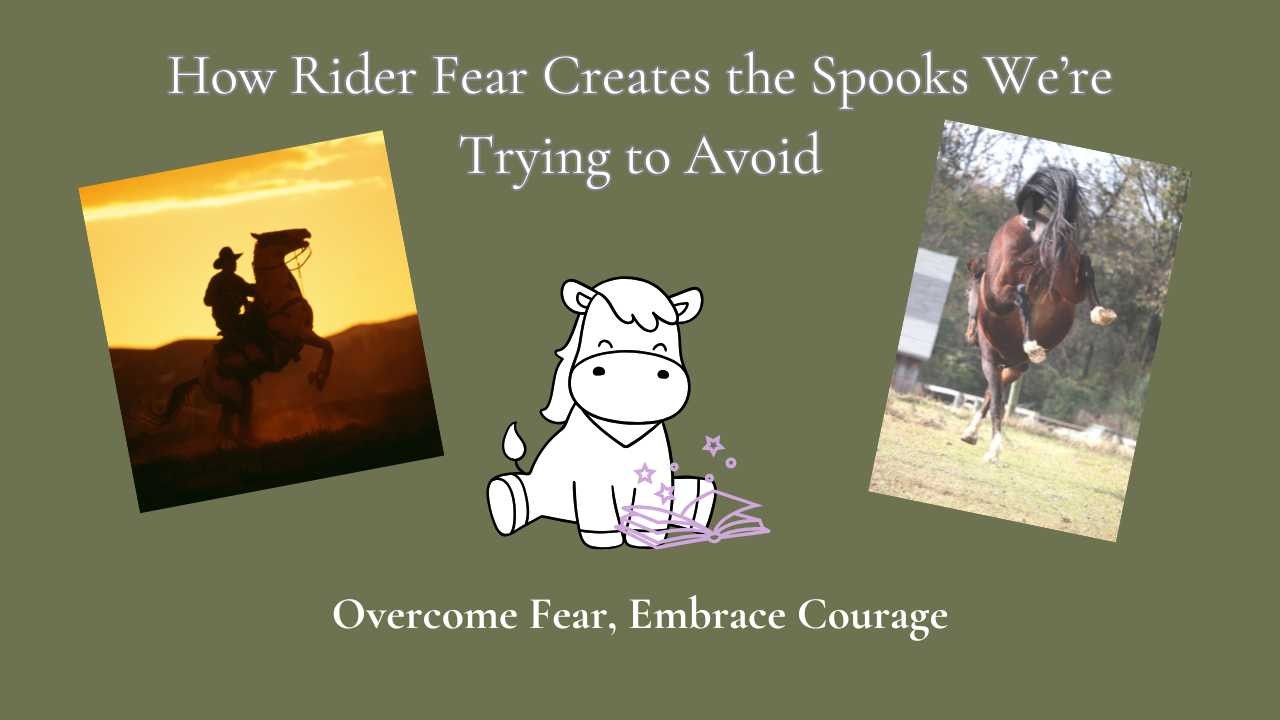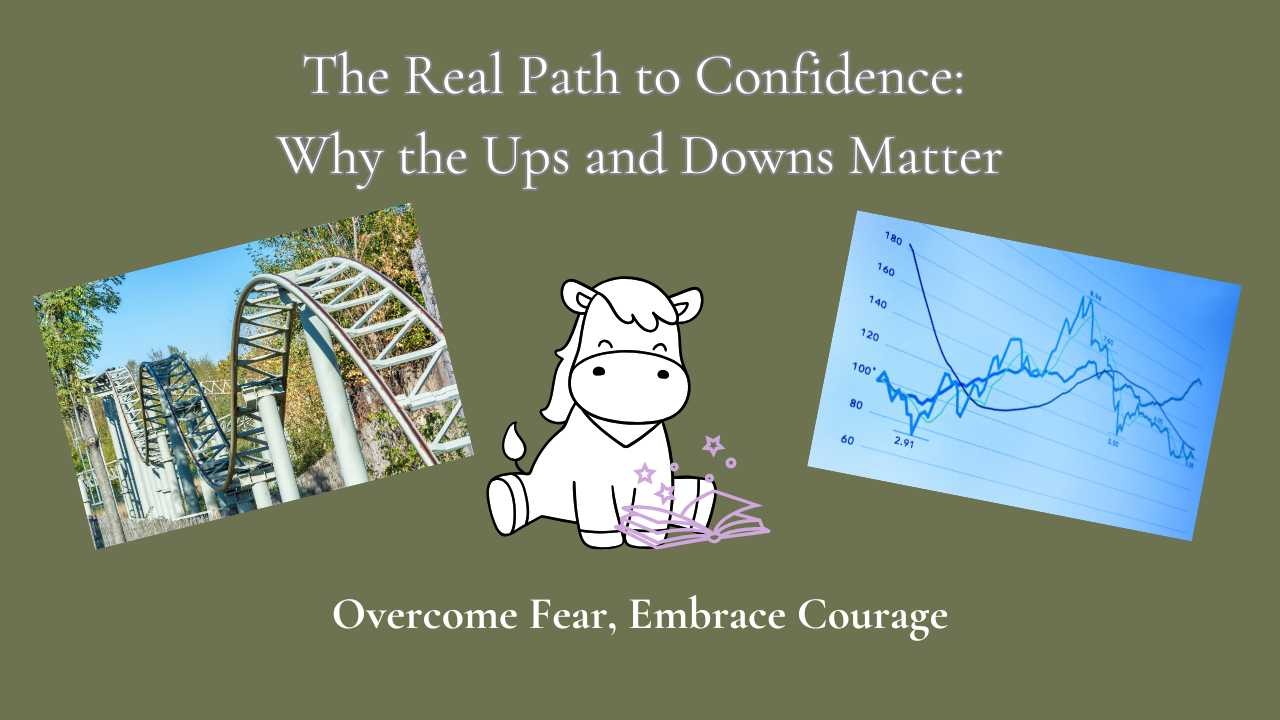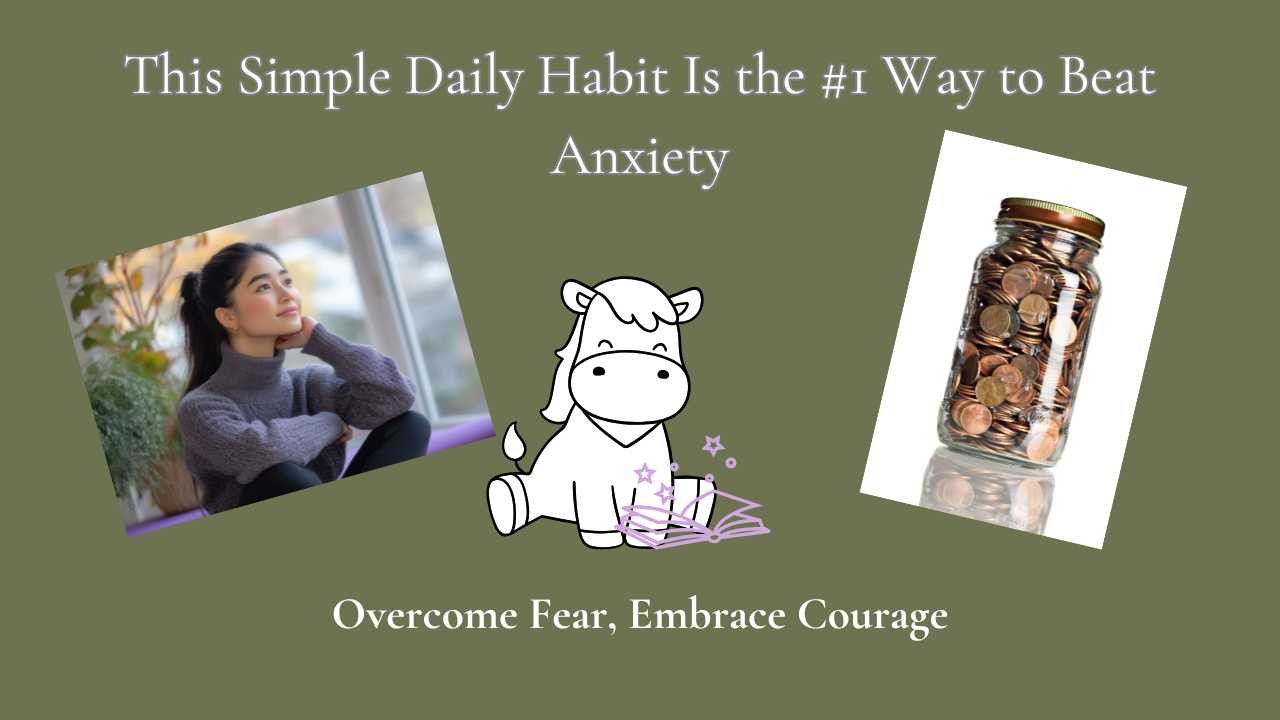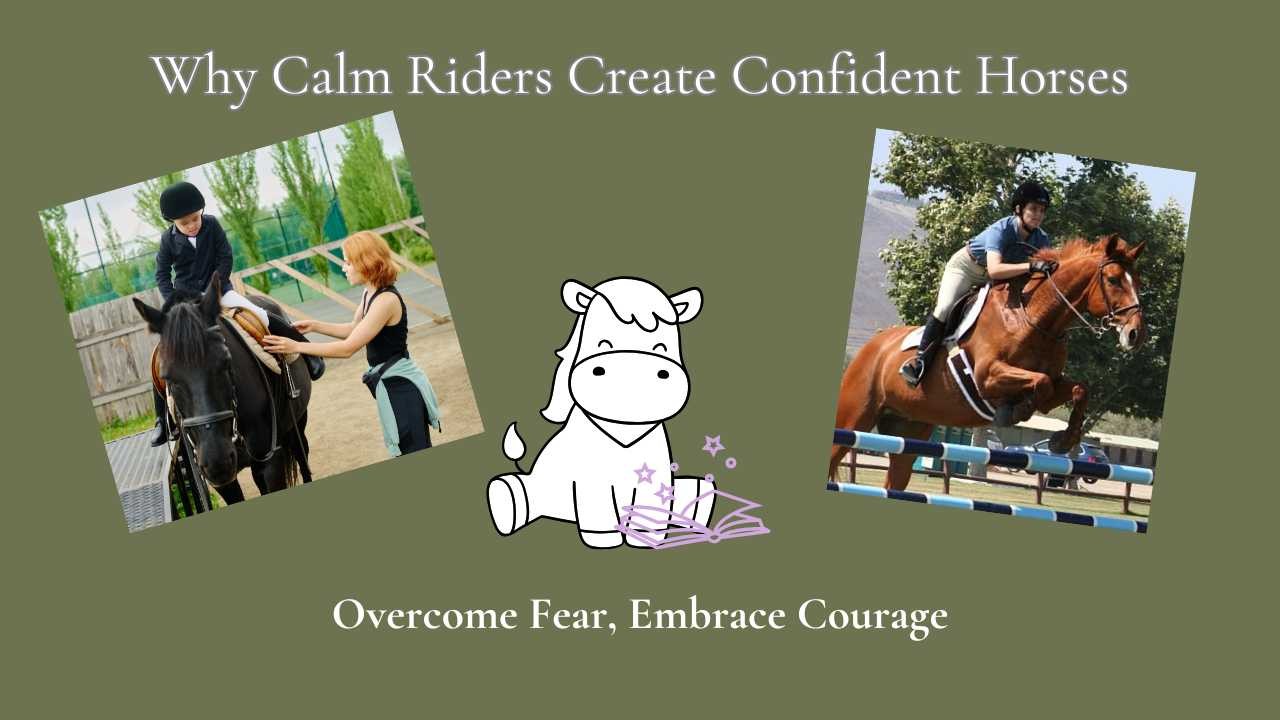
I used to think calm horses created calm riders—until I had a “been there, done that” jumper that I made anxious. What?? Yes, it was me, not him.
He was such a good boy, even with my extreme tension. But over time, he started reacting—triggered by my fears. Especially at the in-gate, waiting to go in for our jumper rounds.
That’s where my nerves were at their peak.
As I worked on my confidence, I could feel him shifting back to confidence too. It didn’t happen overnight. It took time for him to trust me again. But once he did, our shared confidence led to more enjoyable rides—even in competition.
A few things I realized:
- You can’t fake it ‘til you make it with horses. They know. You actually have to find real ways to feel confident. My favorite strategy was focusing on things I was confident in—even if they weren’t directly related to the fear. For example, I felt confident hacking, so I focused on walking to the warm-up ring and moving him laterally. I didn’t think about the course or the jumping at all. Focusing on what I could do helped me stay grounded, and once I was in the ring, I was fine.
- The little things matter. As soon as an anxious thought popped into my head, I’d replace it with something else—before it spiraled into a whole chain of anxiety. I practiced this even when I wasn’t riding, so it became second nature in the saddle. The key was catching that very first thought.
- Build a foundation of courage. The “courage pennies” concept helped me so much. Every time I did something that showed confidence or courage, I added it to my mental bank. Over time, those pennies built a solid foundation.(Want to learn more? Grab The Ultimate Guide to Courage Pennies—get your eBook here!)
The truth is: a rider’s confidence has more impact on a horse’s confidence than we realize. Building our own confidence is a skill—and it’s one that can transform our rides, our connection, and our joy in the saddle.
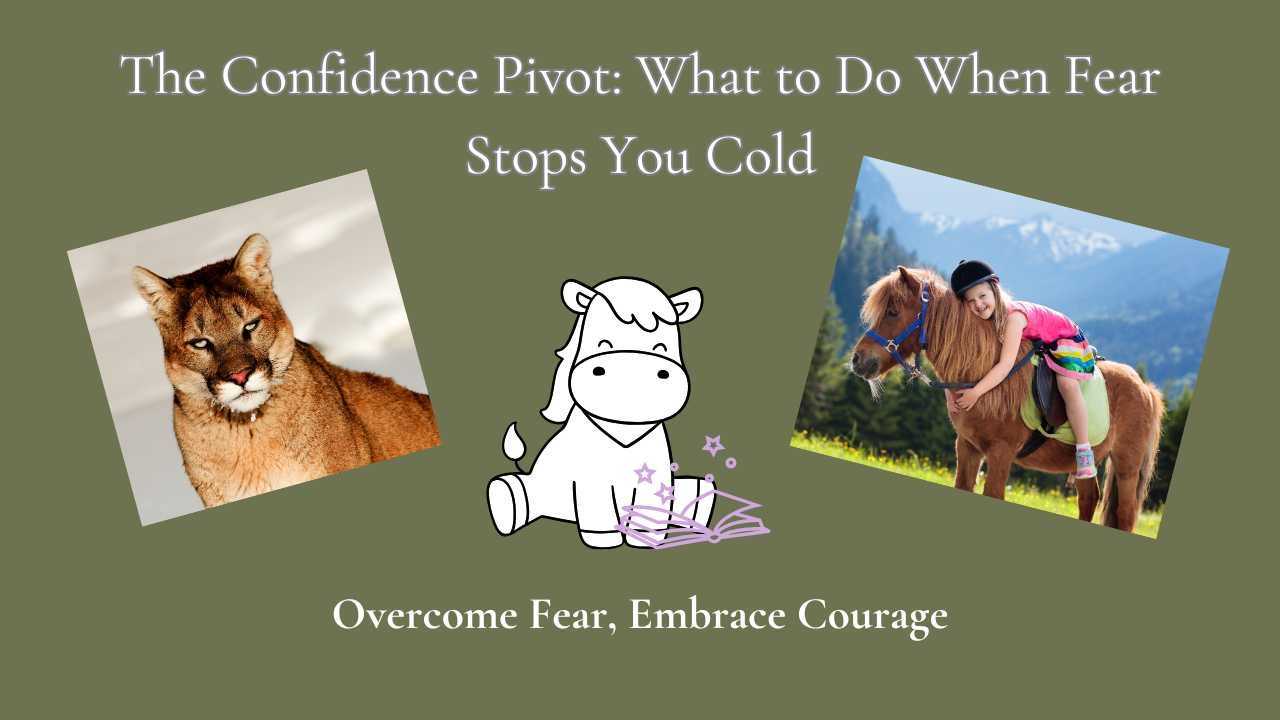
There’s a moment—maybe you’ve felt it—when fear hits so hard your body freezes. Your brain goes offline. Your breath disappears. And all the confidence you thought you had? Gone.
I’ve been there.
Years ago, a mountain lion jumped onto the back of my pony while I was riding. It missed me by inches, but ripped out part of her tail. I didn’t fall off. I didn’t scream. I was frozen to her neck. But I stayed on. I survived. And in the aftermath, something shifted.
I realized: I can ride!
I had faced the worst-case scenario—and I was still here.
That’s the confidence pivot.
It’s the moment when fear tries to shut you down, but something deeper rises up. Not bravado. Not perfection. Just presence. Just proof.
Most of us wait for confidence to show up after we’ve succeeded. But the truth is, confidence is born in the pivot—when fear stops you cold and you choose to move anyway.
You don’t need to face a mountain lion to find it. You just need to notice the moment when fear tightens its grip to stop you. That’s your cue.
Pause.
Breathe.
Ask: "What do I know? What have I already survived?"
Confidence isn’t loud. It’s quiet and steady. It’s the whisper that says, “You’ve done hard things before. You can do this too.”
The next time fear shows up—on the trail, in the arena, before a big call—remember this is your pivot point. The exact place where fear wants to stop you, is the doorway to everything confidence can unlock.
You don’t need to be fearless. You just need to remember who you are, and that you have already done it.
✨ Want more tools to help you pivot from fear to clarity? Grab my workshop in eBook form: The Confidence Blueprint—9 Powerful Principles to Rebuild Your Confidence.
Just $17. No travel, no pressure—just powerful insight, right where you are. Get your copy here!
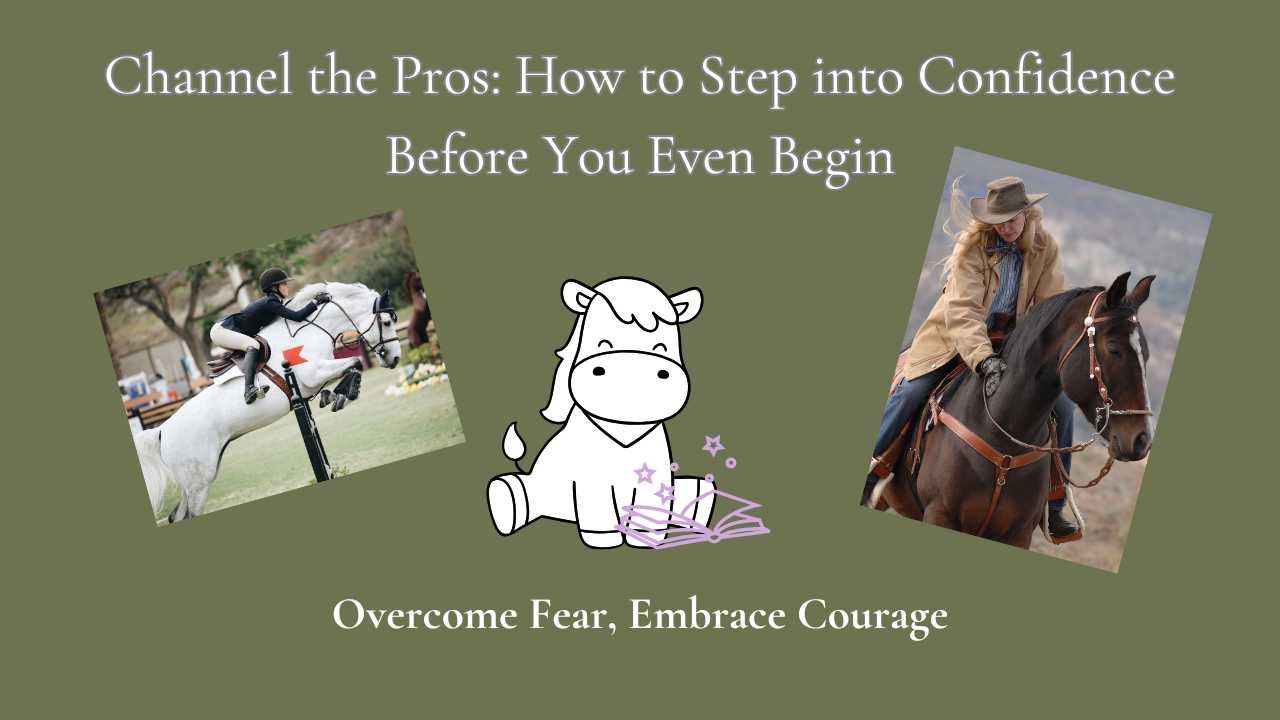
My horse was having a challenging day. You know the kind—ears tight, energy buzzing, and my own anxiety rising fast. I could feel my brain starting to shut down, that familiar fog creeping in. And then, out of nowhere, a thought popped into my head:
“What would Carson James do?”
Instant shift.
I wasn’t just thinking about Carson—I was channeling him. His calm. His clarity. His ability to assess, adjust, and act without drama. And just like that, my anxiety faded. My brain came back online. All the things I’d learned, all the tools I’d practiced—they were suddenly accessible again. I just needed to execute.
And I did. I had a great ride.
This is the confidence hack most riders (and coaches, and creatives) miss. We wait for confidence to show up after we’ve succeeded. But the pros? They summon it before they begin.
They ask, “What would my best self do here?” They channel that energy. They lead from it.
The great news? You can do this ahead of time—before you even walk into the barn. Pick your favorite trainer and walk in their shoes. The imagination we had as kids comes in handy here.
Pretend to be your favorite trainer.
Imagine stepping into their mindset. The one who handles chaos with grace. The one who doesn’t rush, doesn’t react—just responds and knows what to do.
Confidence isn’t about being fearless. It’s about remembering who you are and what you know—then choosing to lead from that place.
You don’t need more information. You need access to what you already know.
So go ahead. Channel the pro. Your brain—and your horse—will thank you.
✨ Want more tools to overcome anxiety and ride with clarity? Grab my workshop in ebook form: The Confidence Blueprint—9 Powerful Principles to Rebuild Your Confidence. For a limited time, it’s just $17. No travel, no pressure—just powerful insight, right where you are. Get your copy here!
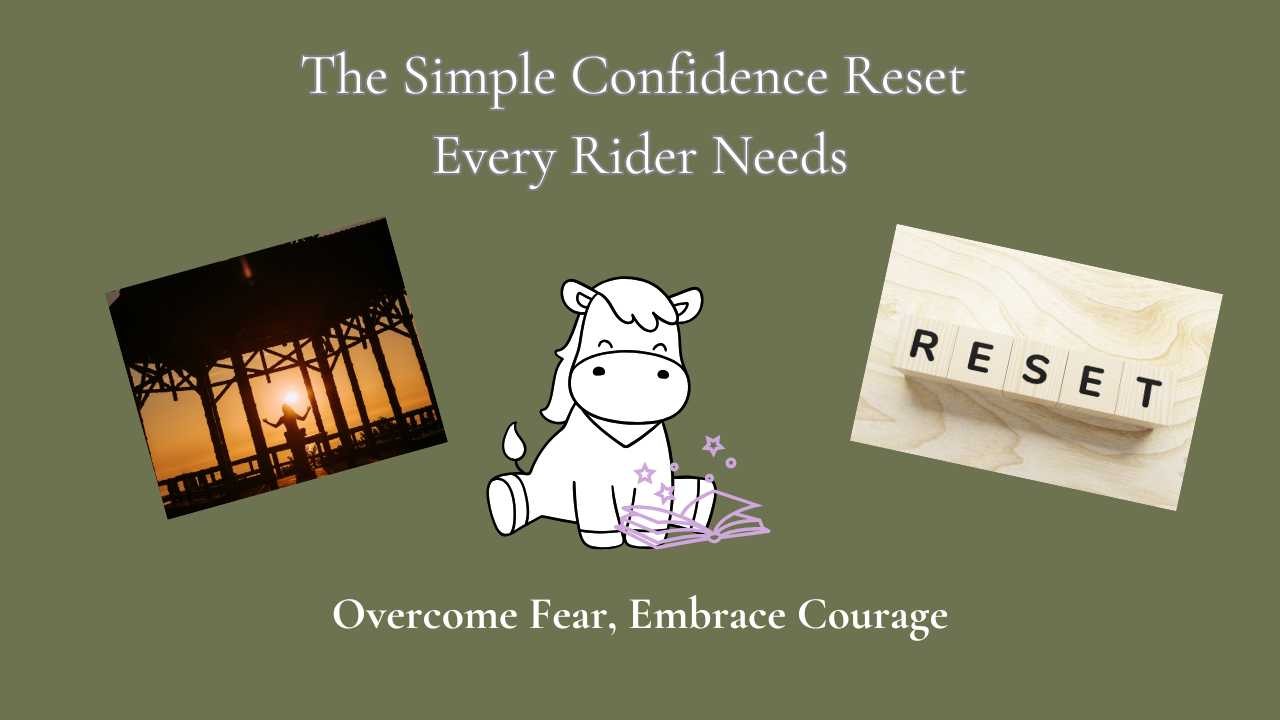
When anxiety or nerves creep in while you ride, your body knows it before your mind does. Shoulders tighten, breath shortens, and suddenly your horse feels that tension too. The harder you try to “push through,” the louder the fear seems to get.
That’s why I love the 3x3x3 Confidence Reset—a simple tool you can use anytime, anywhere, to calm your nervous system and bring your focus back. It’s quick, it’s practical, and it works even in the middle of a ride.
Here’s how it works:
Step 1: 3 Breaths
Pause and take three slow, deep breaths. Inhale through your nose, exhale through your mouth. Feel your shoulders drop a little lower each time. This step tells your body: “We’re safe.”
Pause and take three slow, deep breaths. Inhale through your nose, exhale through your mouth. Feel your shoulders drop a little lower each time. This step tells your body: “We’re safe.”
Step 2: 3 Things You See
Look around and name three things you can see. The fence post. The saddle horn. Your horse’s ears. Naming them out loud helps your brain shift from “what-if” thoughts to what’s real, right here, right now.
Look around and name three things you can see. The fence post. The saddle horn. Your horse’s ears. Naming them out loud helps your brain shift from “what-if” thoughts to what’s real, right here, right now.
Step 3: 3 Things You Feel
Notice three things you can physically feel. The leather reins in your hands. Your seat in the saddle. Your feet pressing into the stirrups. Grounding through sensation reconnects you to your body and steadies your presence.
Notice three things you can physically feel. The leather reins in your hands. Your seat in the saddle. Your feet pressing into the stirrups. Grounding through sensation reconnects you to your body and steadies your presence.
In less than a minute, this reset interrupts the spiral of anxious thoughts and gives your horse a calmer, more confident rider. And here’s the best part: the more you practice it, the faster your nervous system learns to respond. Eventually, confidence becomes your default, not fear.
I know firsthand how quickly confidence can be hijacked and how long it can take to rebuild. My own journey took me nearly twenty years—but it doesn’t have to take that long for you. With the right tools, like this reset, you can fast-track your calm and reclaim the joy of riding.
If you’re ready to take the next step and discover the tools that work best for you and your horse, let’s talk. Book your free Calm-Ride Strategy Call today, and let’s start filling your ride with confidence instead of fear.
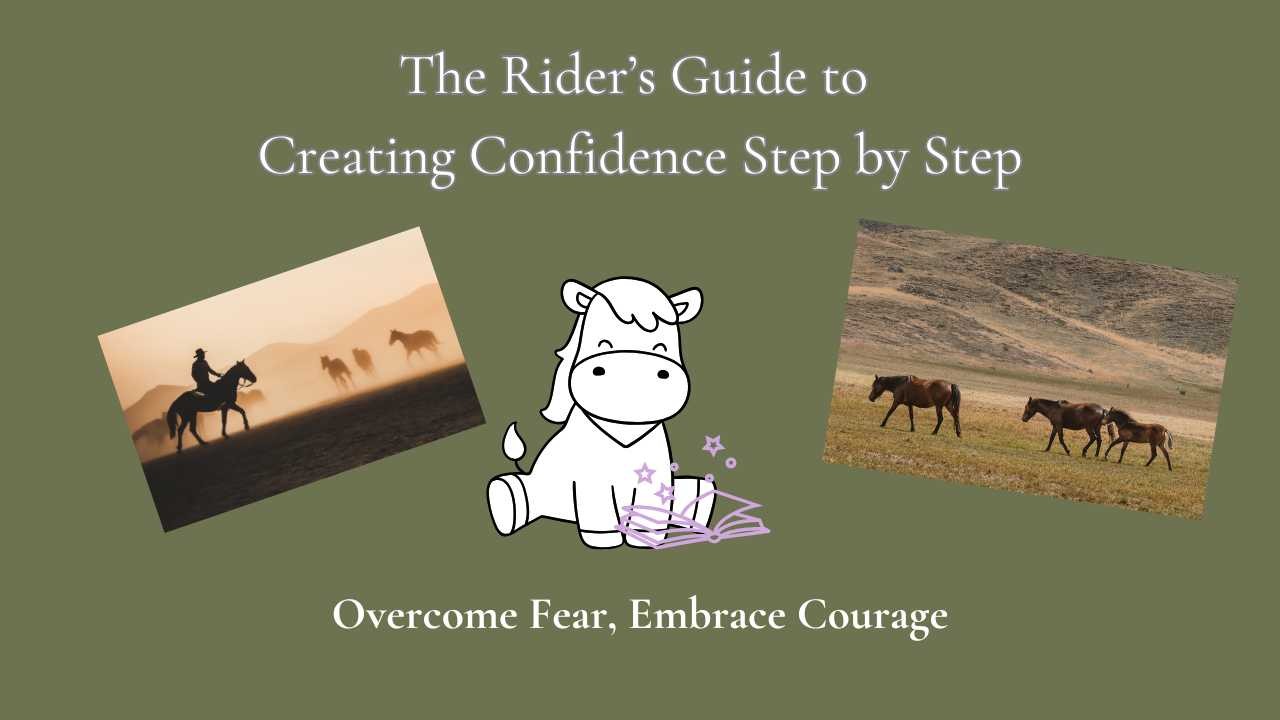
Confidence in the saddle isn’t something you’re born with—it’s something you build, one ride at a time. But here’s the truth most riders don’t hear enough: you don’t have to wait decades to get there. I know, because it took me 20 years to rebuild my own confidence after a bad accident. Twenty years of trial and error, piecing things together the hard way.
The good news? You don’t have to take the long road. With the right tools, support, and a step-by-step approach, you can move through fear faster, steadier, and with a whole lot less frustration.
Think of it like learning to ride all over again. You don’t climb on a horse and instantly lope off into the sunset—you start small. First, you find your balance at the walk. Then you add in new skills, test your edges, and practice what helps you feel steady. Over time, that steady walk turns into a confident trot, then into the freedom of a canter.
Building confidence works the same way:
- Step one: Calm your mind. Learn simple resets so fear doesn’t spiral out of control.
- Step two: Test and practice. Add a little challenge while staying grounded in calm.
- Step three: Build momentum. String your wins together until confidence feels natural.
It’s not about giant leaps or “faking it till you make it.” It’s about steady, consistent steps forward—steps that stack until you realize you’re riding with ease again.
Patience for steps backwards, knowing there are more steps forward that are coming. It is an ebb and flow.
If confidence has felt out of reach, you don’t have to wait years like I did. You can start creating it today, step by step, with the right guidance.
Ready to find out what your first step should be? Let’s talk.
👉 Book your Calm-Ride Strategy Call and discover the tools that can shorten your journey back to confidence in the saddle.


